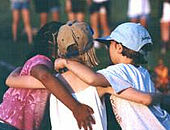The Demographic Census – a population count carried out by the IBGE every 10 years – revealed that the Brazilian population, in 2010, was 190 million inhabitants. In 2013, estimates indicated that this number had already exceeded 200 million people. Despite this big difference, did you know that our country's population is increasing at a slower pace than before?
In the 1960s, the average rate of increase in the number of inhabitants per year was almost 3%. This is like saying that for every 100 people who lived in our country, three were born every year.
In subsequent decades, the value of this growth was getting smaller, so that in 2007 it was 1.2%, less than half of 50 years earlier. Between the years 2012 and 2013, the growth rate was only 0.9%, which means that this rate does not stop falling.
But don't forget: the Brazilian population, for now, isn't getting smaller, it's just growing at a slower pace.
But why does this happen?
First, we must remember that the population of a given location grows in two different ways: with the number of births subtracted from the number of deaths (vegetative growth) and with the number of people who entered the country subtracted from the number of people who left our territory (balance migratory).
What happens is that the number of births has been getting smaller in recent years. Furthermore, the migratory growth only had an impact on our country during the colonial period. The decrease in this birth rate is mainly due to control through contraceptive methods and to increased family planning, so that families are generally preferring to have one or two children in the maximum.
According to the Brazilian Institute of Geography and Statistics (IBGE), Brazil will only increase its population until the year 2042, when it will reach a total of 228 million inhabitants. After this year, the number of people living in our country will probably gradually decrease, when, in 2060, it will be 218 million.
By Rodolfo Alves Pena
Graduated in Geography

